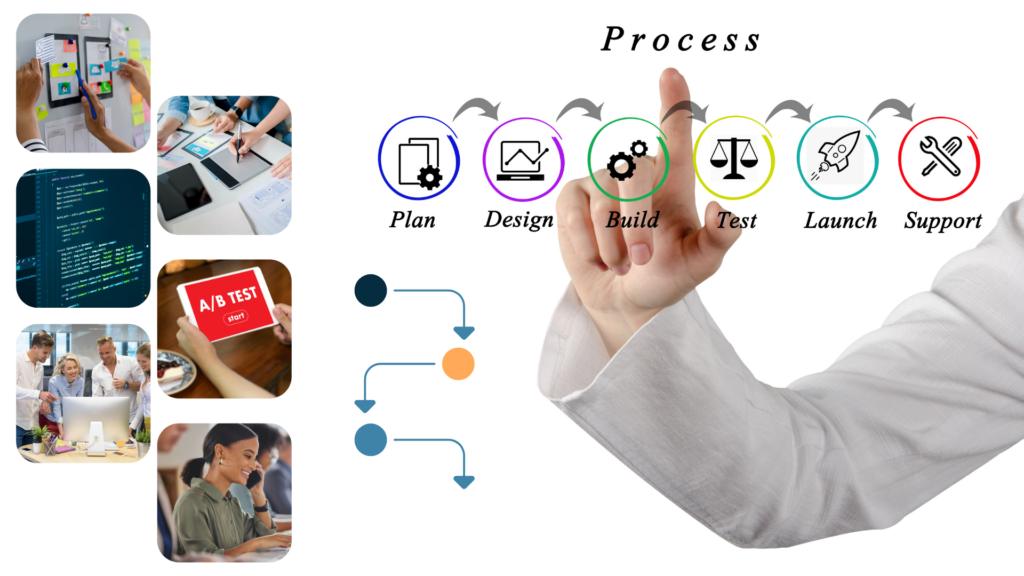
It’s like the blueprint of a beautiful building, ensuring that all the components of your web app work together seamlessly. Just like a well-designed structure, a properly designed architecture sets a strong foundation for your web application’s development and future expansion.
Now, let’s dive into the two key players in web application development: client-side code and server-side code. They’re like the dynamic duo, working in harmony to deliver an exceptional web experience to users.
First up, we have the client-side code. This is the code that resides in the browser and responds to user inputs. It’s like the front-facing part of your application, dealing with all the visual elements and user interactions. Think of it as the cool interface that users interact with directly. HTML, CSS, and JavaScript are the superheroes of client-side code, working together to build beautiful pages and make them come alive.
On the other side, we have the server-side code. This is the code that resides on the server and responds to HTTP requests. It’s like the behind-the-scenes wizard, handling all the heavy lifting and data processing. Server-side code, written in languages like PHP, Java, Python, C#, or Ruby on Rails, creates the pages requested by users and stores data like user profiles and inputs. It’s the powerhouse that makes your web app function smoothly.
So, how do you choose the best architecture for your web application? Well, it depends on your specific needs and goals.
Let’s take a look at some common web application architectures:
1. Single Page Applications (SPAs): These are all the rage now! SPAs have a minimalist layout and update only specific parts of the page when users navigate, without reloading the entire page. They offer a seamless, interactive experience. JavaScript frameworks like Angular and React shine in building SPAs. Just think of Gmail, Google Maps, and Facebook—they’re rocking the SPA game!
2. Multi-Page Applications (MPAs): These are the classics, the tried-and-true approach. MPAs reload entire web pages when users interact, sending requests back and forth between the server and the browser. They’re great for large applications with lots of content and features. Look at Amazon and eBay—they’re prime examples of MPAs!
3. Microservices: Picture a bunch of independent services working together like a well-oiled machine. Microservices architecture allows you to build distributed software systems using loosely coupled services. It’s flexible, scalable, and perfect for large and complex projects. Netflix, Uber, Spotify, and PayPal are among the cool kids using microservices.
4. Serverless Architectures: Forget about managing servers! With serverless architectures, you can focus solely on your application code. Cloud providers like Amazon and Microsoft handle the server management, dynamically allocating resources as needed. It’s all about simplicity and scalability.
5. RAD Stack: Ready for rapid app development? RAD stack combines React Native, APIs, and Django to help you build applications quickly and deploy them in critical contexts. It’s the default stack of the Crowdbotics App Builder, making app development a breeze.

Each architecture has its strengths and weaknesses, so choose wisely based on your project requirements. SPAs offer blazing-fast performance and an excellent user experience but require robust data protection. MPAs provide rich functionality but can be more complex and less responsive. Microservices offer scalability but come with additional development and maintenance complexity. Serverless architectures remove server management burdens but may have limitations in resource usage.
Remember, technology is ever-evolving, and new trends like service-oriented architecture and single-page applications continue to shape web application architectures. Keep an eye on these trends and choose an architecture that best suits your project’s needs.
When it comes to web application architecture, consistency is key. Ensure your chosen architecture aligns with your development goals, prioritize performance and simplicity, and consider factors like automation, data management, and self-maintenance. It’s like constructing a sturdy building that stands the test of time.
So, go forth and choose the best architecture for your web application. Build a digital masterpiece that delights users, performs flawlessly, and stands tall in the ever-changing landscape of the web!
Contact Distance Coding https://calendly.com/distancecoding/30min today to discuss your unique needs and discover tailored solutions that align with your goals.We are here to help. Let’s talk and get to know each other. Looking forward to hearing from you.
Distance Coding – www.distancecoding.agency




